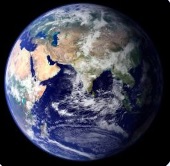| www.tmatlantic.com
Test & Soldering Equipment On-line Store |
|
D.E.V.I.C.E. (Wiki)Calculators Services |
|||||
Filter by first letter
|
Measurement of the Earth size
On June 11, 1635, Englishman Richard Norwood tried to experimentally measure the size of the Earth. He made his measurements with an instrument whose radius was more than 5 feet. Norwood found the altitude of the Sun at noon on the 11th June 1633 in London to be 62° 1’, while at noon on the 11th June 1635 in York it was 59° 33’ – a difference of 2° 28’. (1’, an arcminute, is a sixtieth of a degree). The true difference is 2° 27’, so he was only about 0.7% too high, and his reporting to the nearest arcminute seems justified. He found the York-London north-south distance to be 9149 chains, equal to 276.1 km. (His chain was 33 yards – about 30.18 m – long; a chain was later standardised to 22 yards). The correct distance is 272.6 km, so he was about 1.3% too high. When combined with his angle measurements for the Sun, he found a degree of latitude to be 367,200 English feet, making the circumference of the Earth 25,036 miles, or 40,292 km. Richard Norwood described the measurements he took in his Seaman's Practice, published in 1637. |
Site mapPrivacy policyTerms of Use & Store PoliciesHow to BuyShippingPayment




|

























